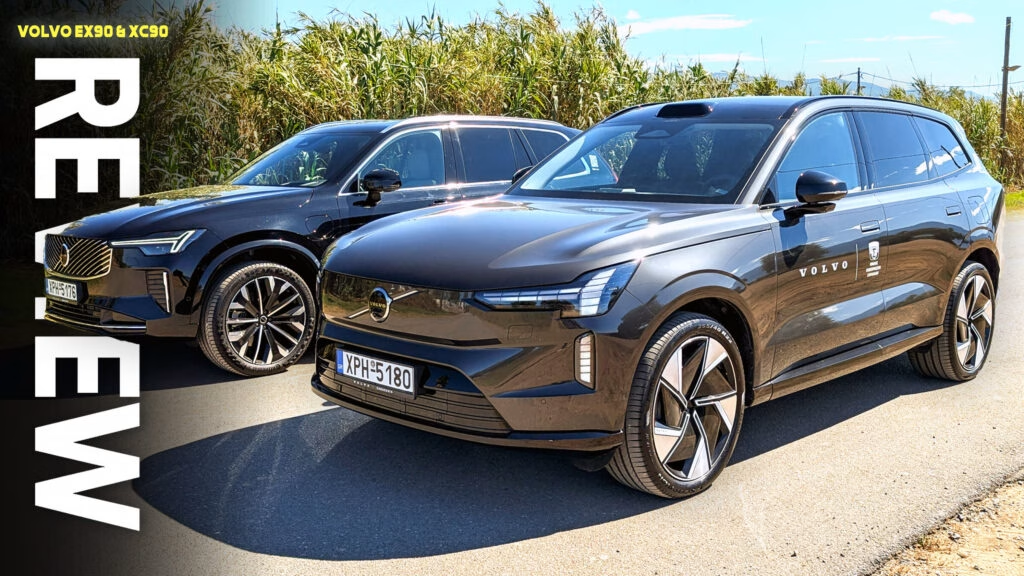What’s Volvo’s New Approach to Electric and Combustion SUVs?
Volvo’s latest move is a bit of a plot twist. Instead of going all-in on electric vehicles, the Swedish brand is hedging its bets—offering refreshed versions of its tried-and-true combustion models right alongside their electric siblings. The most telling example? The 90 series, where the updated XC90 (now with a sharper look and more tech) stands shoulder-to-shoulder with the all-electric EX90. This isn’t just a marketing ploy; it’s Volvo reading the room. Not every driver is ready to ditch the gas pump, and Volvo’s giving buyers real choice.
How Do the Volvo EX90 and XC90 Stack Up on Paper?
Let’s get the numbers out of the way, because they matter. The EX90, Volvo’s electric flagship, packs a punch with 510 horsepower and a whopping 671 lb-ft of torque in its Twin Motor Performance trim. It’ll sprint from 0-62 mph in 4.9 seconds—half a second quicker than the plug-in hybrid XC90 T8. The EX90’s 111 kWh battery delivers up to 382 miles of range (WLTP), dwarfing the XC90’s 44-mile electric-only capability.
Both SUVs offer three rows of seating and nearly identical cargo space—just over 23 cubic feet behind the second row. The EX90 is a hair longer and rides on Volvo’s new SPA 2 platform, while the XC90 sticks with the original SPA architecture. Pricing? The EX90 starts at $86,290 in the US, while the XC90 T8 PHEV comes in at $74,295. So, the electric option is pricier, but you’re getting more tech and performance for your money.
Which Volvo SUV Has the Edge in Design and Presence?
First impressions count, and both these SUVs have presence. The EX90 leans into modernity with a longer body, clamshell hood, and bold, flared fenders. Its 22-inch wheels and minimalist, closed-off grille scream “future.” The XC90, meanwhile, has just received a facelift that keeps it looking fresh—its grille and Thor’s hammer LED headlights still turn heads. But let’s be honest: the rear end of the XC90 is starting to show its age, while the EX90’s split taillights and extra LEDs are a clear nod to next-gen design, even if not everyone’s a fan.
Inside, the EX90 doubles down on minimalism. Its floating center console and clean lines are undeniably modern, but some might find the XC90’s use of wood and fabric inserts, plus its crystal-like shifter, a bit more inviting. The EX90’s tech-forward approach is obvious, but the XC90’s cabin still feels luxurious and familiar.
Is the Tech Leap in the EX90 Worth It?
Both SUVs now run Google-powered infotainment systems, but the EX90’s 14.5-inch touchscreen dwarfs the XC90’s 11.2-inch display. The EX90 also gets a smaller, clearer digital instrument cluster. Here’s the rub: the EX90’s lack of physical buttons can be a pain, especially when you’re hunting for drive modes or quick settings. The XC90, with its more conventional controls, might actually be easier to live with day-to-day.
On the safety front, Volvo’s reputation is safe—pun intended. Both models come loaded with advanced driver-assist features and a 112 mph speed limiter. The EX90, however, steps it up with a roof-mounted LiDAR system, putting it ahead of most rivals in terms of future-ready safety tech.
How Do the EX90 and XC90 Feel on the Road?
Here’s where things get interesting. The XC90 is still a fantastic cruiser—quiet, comfortable, and composed. Its plug-in hybrid powertrain delivers strong acceleration, but the SUV’s weight and size are always present, especially in corners. The air suspension helps, but you’re reminded this is a big, luxurious family hauler.
The EX90, on the other hand, feels like a leap forward. The new chassis and dual-chamber air suspension deliver a smoother, more controlled ride. Switch to Performance mode, and body roll tightens up noticeably. The steering is sharper and more direct, making the EX90 feel smaller and more agile than its size suggests. And thanks to instant electric torque, it feels genuinely quick—more so than the numbers alone might imply.
Which Volvo SUV Is the Better Buy for You?
If you’re not ready to go fully electric, the XC90 is still a top-tier choice. The latest updates keep it competitive, and its plug-in hybrid system offers a nice bridge between old and new. But if you’re open to EVs—and can stomach the higher price—the EX90 is simply the more advanced, better-driving SUV. It’s quicker, more refined, and packed with the latest tech.
The big takeaway? Choosing between the EX90 and XC90 isn’t about picking a winner—it’s about matching your lifestyle with the right tech. Volvo’s dual-track strategy means you don’t have to compromise. Start by test-driving both, and you’ll quickly see which one fits your daily rhythm. Perfection isn’t the goal—smarter, more thoughtful choices are. Try one change this week, and you’ll likely spot the difference by month’s end.

